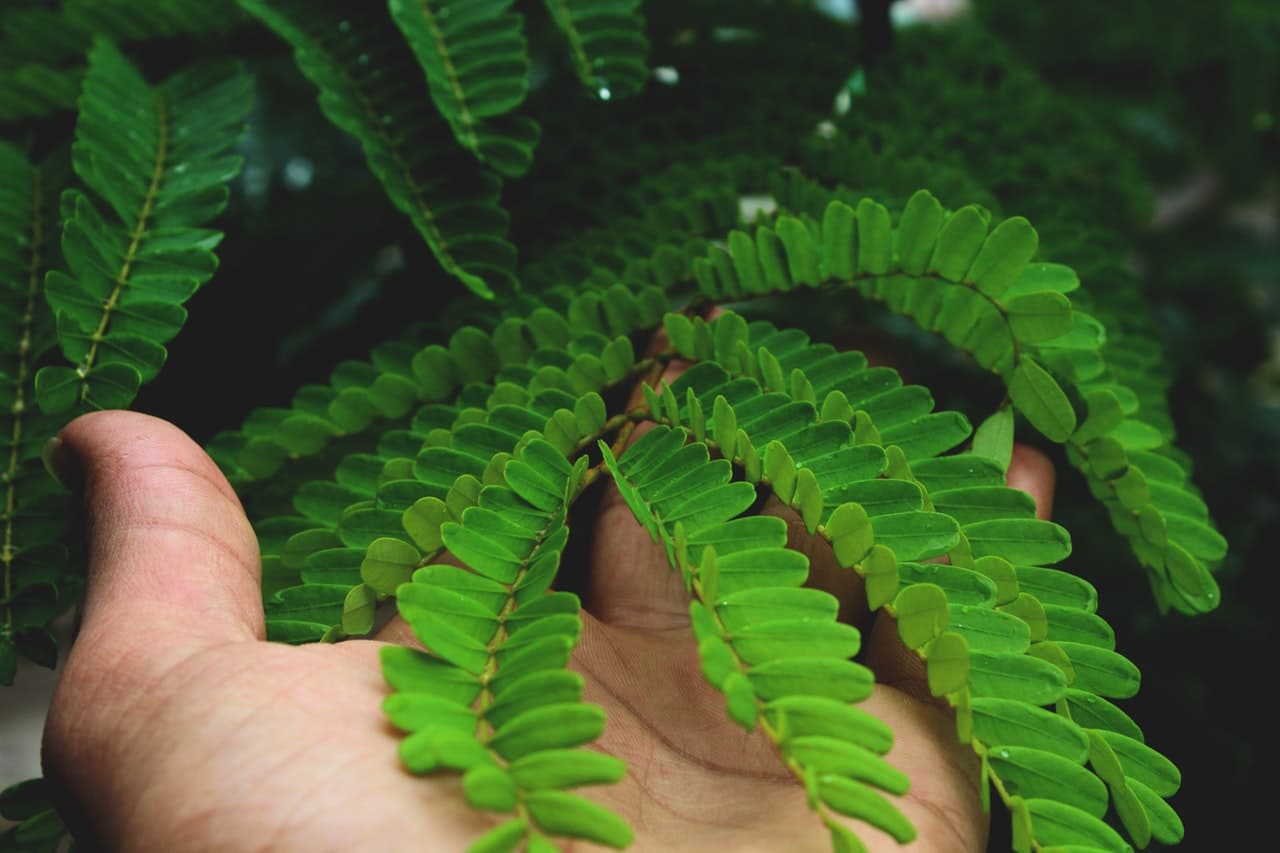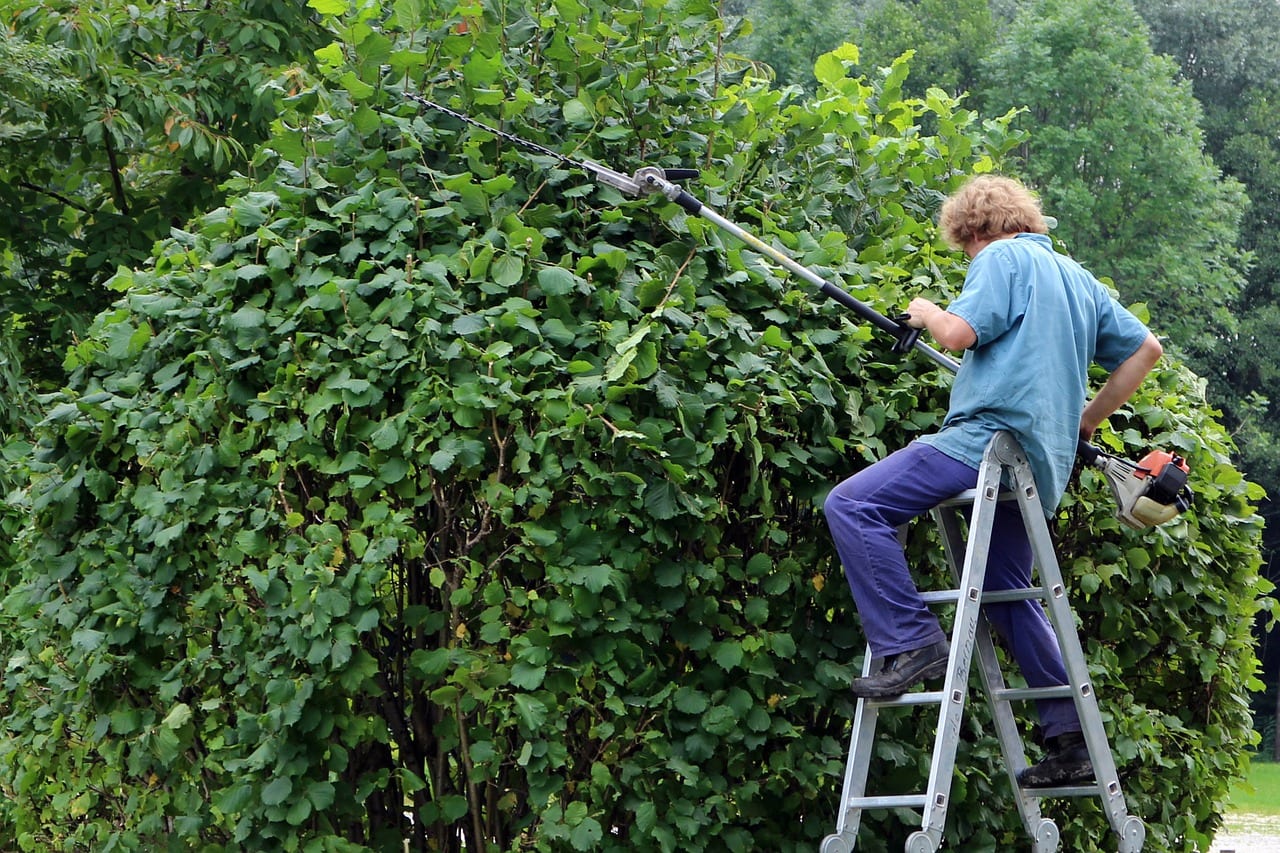
The plants that are bought need a series of care to be able to live healthily. Unlike those that live in nature, most of the plant species that are traded originate from other countries, that is, they are non-native; therefore, they will need extra help if they want to grow and flourish normally due to different living conditions.
Although this qualification sounds a bit strange to us, the plants we grow have been domesticated by our ancestors. And like all domestication, this one has its advantages but also its drawbacks. So, let's see what care the plants need.
What is the domestication of plants?
Before entering fully into the subject, I think it is important to briefly talk about the domestication of plants, because in fact if it were not for the centuries and even millennia that humans have dedicated, and dedicate today, to it, surely something like the ornamental gardening or gardening would not exist.
And it all started, how could it be otherwise, instinctively. People, as we well know, need to eat, but we are also very curious animals. Based on trial and error during the Neolithic, little by little we discovered those that could be of use to us, and those that, on the contrary, we should leave alone.
Once we learned how to grow the seeds, we went on to select those specimens that most interested us, and to cross between them. This helped us, and it helps us today to get specimens that produce a greater amount of fruit than their wild parents, or with a lower height for example. But, as we said before, not everything is positive.
A domesticated plant has a more difficult time surviving in its natural environment, and let alone multiply. It is easy for your defense system to weaken, mainly due to the use of phytosanitary products (especially insecticides) compounds / chemicals, which kill pollinators. Also, if it is one that takes advantage of any of its parts, such as the lettuce Of which their leaves are consumed, what is done is to cut the flower stalk so that they spend energy in continuing to produce leaves.
If we take this into account, we can intuit that the plants that suffer the most from the so-called domestication syndrome are the annual, especially those that have some nutritional and / or medicinal use. The perennialsOn the contrary, as they have a slower growth rate, new generations are 'born' more slowly and more widely.
What are the care that plants need?
Now that we know more about the domestication of plants and its consequences, we are going to talk about the care required by those that we acquire in nurseries and / or stores.
It is very necessary to clarify that each type of plant, each species, will have some needs or others, so you must bear in mind that the care that we are going to tell you is general, and therefore indicative.
If you need to know the specific care of a specific plant, please use the blog search engine.
With that said, let's get started:
Sunlight

All plants need sunlight to grow. Thanks to her, can photosynthesize and thus produce food (sugars and starches basically) that will help you to stay alive and to be able to perform your functions normally.
Some of them will want direct light, like many succulents (cactus and crass), a wide range of trees y palms, among others; but others will want to be in a bright area but without direct sun, such as hydrangeas or azaleas for example.
In the event that you are not clear where you should put it, We recommend that you place it in a bright area, but protected from direct sun.
Irrigation

Apart from light, the next most important thing for plants we could say is water. Water is the liquid that keeps them hydrated, with which the nutritive substances are transported by the vessels found in the trunk -if they have it-, branches -if they have-, stems -if they are present-, leaves, flowers and fruits from the roots (the leaves can also absorb water through the pores on their surface, but in less quantity).
However, while water is life, water can also be death. You have to control the risks a lot, because both the excess and the lack of it will cause damage to the roots, and consequently to the other parts of the plants. In principle, you should know that in summer it is watered more often than the rest of the year, and that you have to pour water until the whole earth is well moistened; that is, you have to pour water until it comes out through the drainage holes of the pot or until the soil is well soaked.
The best water to irrigate is that of uncontaminated rain. This is the one that you can use to hydrate any type of plant, be it orchids, carnivores, trees, palm trees, ... whatever. Now, if you live in an area where there is little or no rain, you can use soft water (suitable for human consumption) and without lime.
Subscriber

Image - Wikimedia / Sten Porse
Subscribing is the third most important task that every gardener must perform. But beware, not because it is the third must be forgotten. It is true that there are plants, such as carnivorous, that you DO NOT have to pay because they alone hunt their prey which they will later feed on, but the rest… the rest should be paid.
Both nitrogen, phosphorus and potassium are the three nutrients that they need, yes or yes, to grow, flourish, bear fruit and be well. Now, the others, like manganese, iron, calcium, zinc, and a long etcetera, need them too. So, we recommend the alternative use of different organic fertilizersand guano, compost, horse, cow, goat and / or animal manure chicken,… throughout the year but especially in spring and summer, which is when they need more energy to grow and produce flowers and fruits.
If you have them in a pot, use liquid fertilizers so as not to worsen the drainage of the substrate, following the instructions specified on the container.
Pruning

In order to keep looking beautiful, and incidentally try to prevent them from becoming attractive to insects that can become pests and microorganisms that cause diseases, it is important that wilted leaves and flowers are cut, as well as weak, diseased, or broken stems. For this you have to use pruning tools previously disinfected with pharmacy alcohol or with a disinfectant product.
But when can they be pruned? Well, small pruning can be done throughout the year; however, training pruning and those that have to cut many branches should be done in late winter.
Plagues and diseases

Domesticated plants, as we have said, tend to be more vulnerable than wild ones. This also means that they may have more pest and disease problems than their wild sisters. Therefore, it is necessary to keep them protected from the most common ones, such as Red spider, aphids, mealybugs, White fly; as well as the bold, powdery mildew, roya, anthracnose, bacteriosis y virus.
Daily, or every 2-3 days, it is advisable to take a look at the leaves, since the sooner the problem is detected, the sooner it can be eradicated. So if we see an insect, or a stain that does not have to be, we can act quickly by doing a first treatment with soap and water.
Transplant or planting

The best time for both potting and planting them in the garden is spring, or fall if the weather is warm. You have to do it with care, trying not to manipulate the roots too much, and putting them in substrates or land suitable for them.
There will be plants that, being small, it will be better to have them in a container, which can be the same throughout their life, but there will be others that or will need a larger pot every 2, 3 or 4 years depending on their growth rate, or even ground.
Protection against cold

To be able to successfully grow a plant outdoors all year round it is essential to know what is its minimum resistance to cold, since otherwise the risk that we spend the money in vain will be high. And still, you have to keep in mind that nursery plants are usually delicate. A clear example of this we have in the poinsettia, the typical red-leaved Christmas plant. This is a shrub that resists well cold and weak frosts of up to -2ºC, but since it is so fertilized, so pampered, so that it is beautiful at Christmas, most of the specimens that are bought tend to die (something that by the way you can avoid by following the advice we offer you in this article).
Because of that, If the winters in our area are very cold for the plants we have bought, we will have to protect them in a greenhouse, with anti-frost fabric (on sale here), or indoors by putting them in a bright room away from drafts.
And with this we are done. We hope it has been useful to you 🙂.